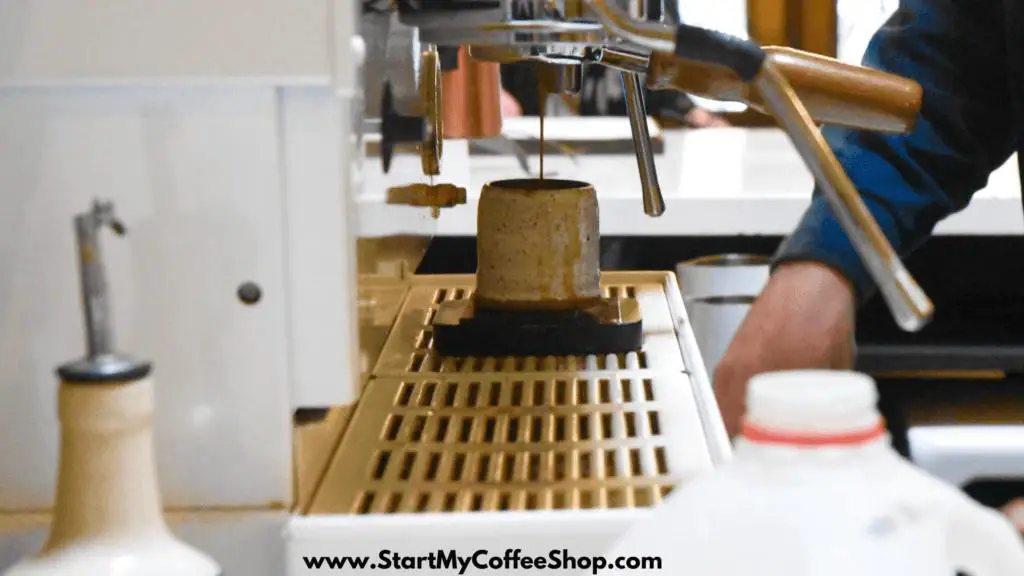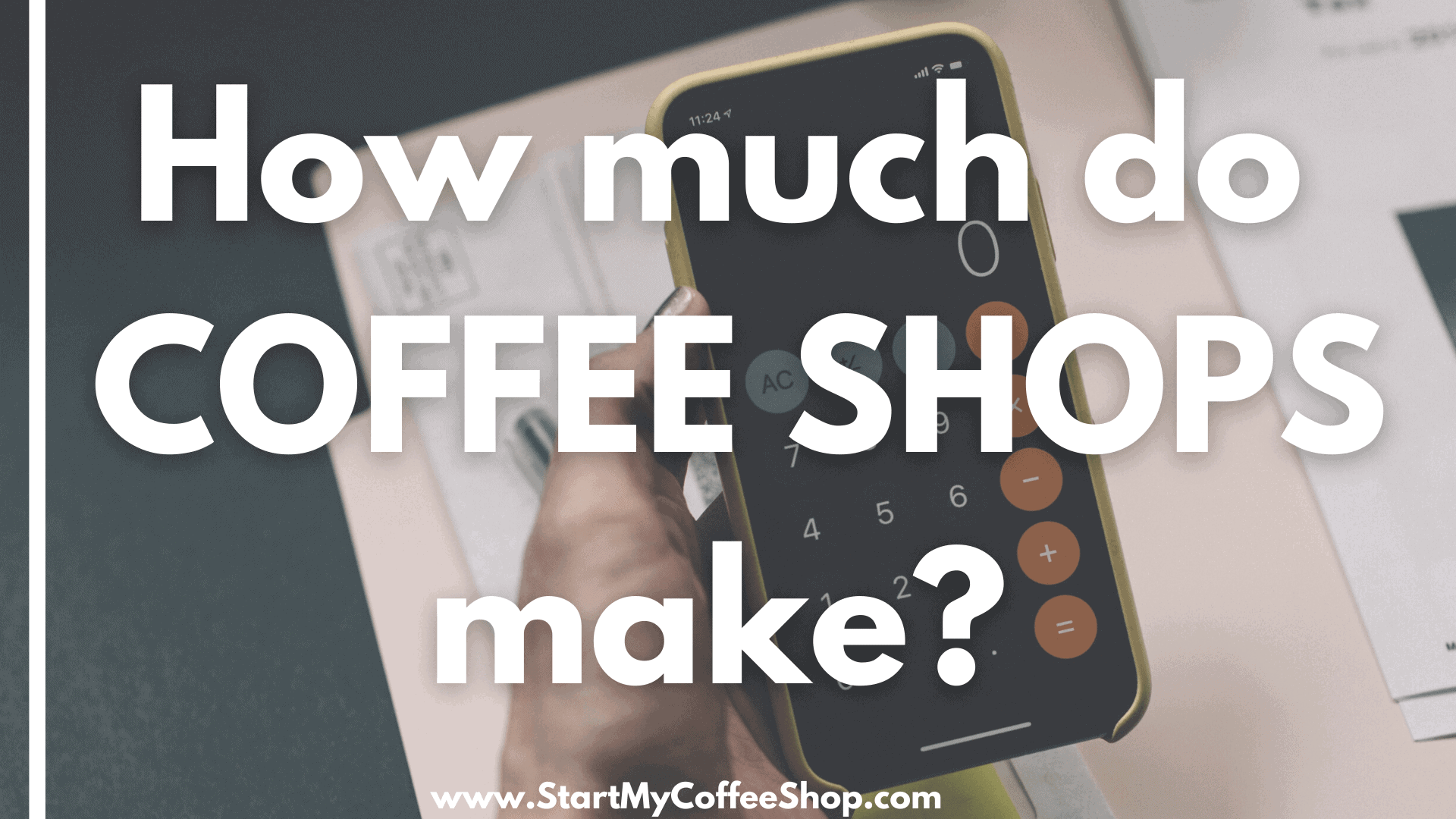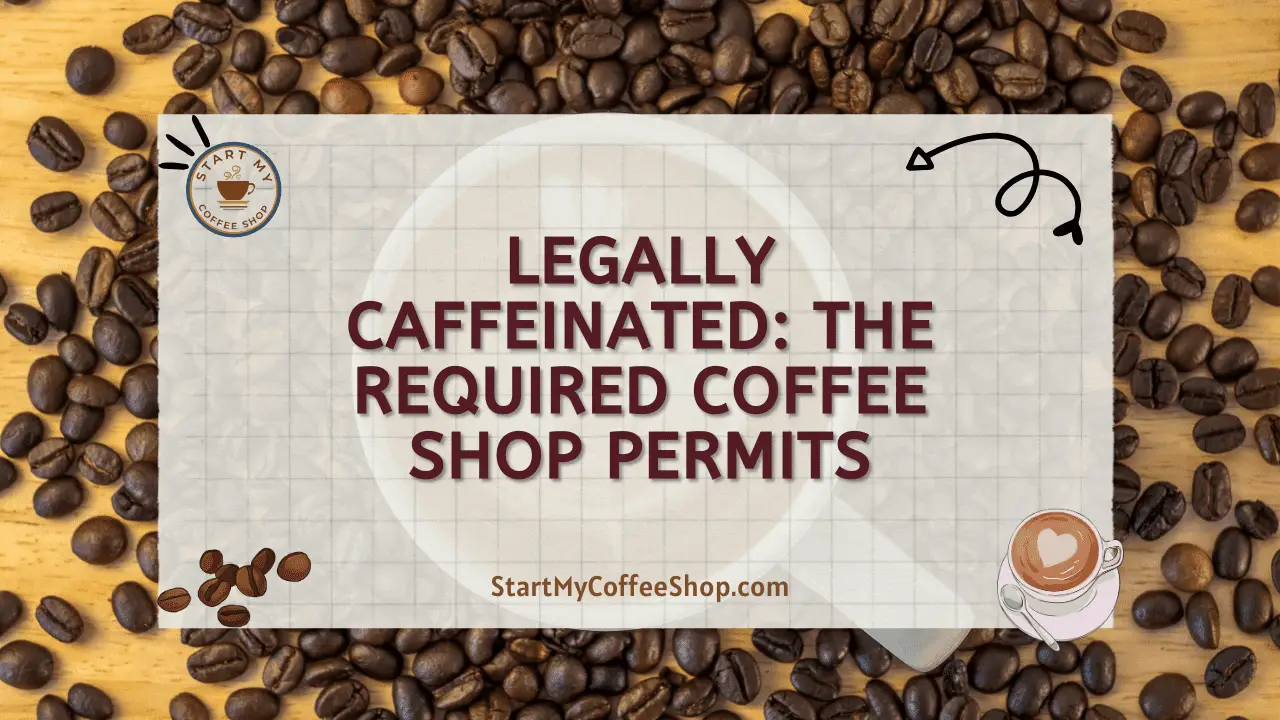Coffee shops, whether upscale or casual, bring in many customers per day. Every smaller purchase that each customer makes adds up over time. Most coffee shops also offer a low-key atmosphere, which makes them appeal to customers beyond those seeking coffee. With multiple reasons to arrive and stay, coffee shops bring in a variety of people for a variety of reasons. This may make a coffee shop business a worthwhile pursuit. Before you begin, you may be wondering how much revenue coffee shops bring in.
The average coffee shop makes $873 per day, with the average transaction being $11.11 per customer. Owners can expect to personally earn between $60,000 to $160,000 per year with their initial earnings doubling within the first few years. Factors that impact sales include food and beverage selection, music, employees working each shift, and level of service.
Additional factors affecting a coffee shop’s income numbers are: the average price of the items, whether it’s a weekday or a weekend, the costs the coffee shop incurs, and how many orders there are per day. There is much to consider when determining how to make and keep your coffee shop profitable!

The Math Behind the Income
Let us start with how many orders coffee shops bring in per day:
Most coffee shops sell 230 cups per day. Based on the assumption that most people drink 3 cups per day, it is safe to assume that 76 people come through a coffee shop on an average day of service. On average, 476 patrons purchase items from a coffee shop per week.
On weekdays, between 6 AM to 10 AM, coffee shops experience the majority of the traffic they will see throughout the week. It’s safe to assume while most customers would just get coffee, others are bound to get more than that.
Early risers need food in their stomachs before rushing off to endure a long work day. Others will order for multiple people. This makes the lowest average order $7, and the highest $20.
Friday brings coffee shops the most sales of any other day of the week. Coffee businesses collect 18.3% of their revenue on Fridays. Peak times for coffee shops are usually mornings between 6 AM to 8 AM, noon to 3 PM in the afternoon, and 6 PM to 9 PM in the evening.
How often a coffee shop stays open can vary, but most maintain the same or very similar hours to each other. Occasionally, you’ll find one that is open for twenty-four hours. The longer a coffee business is open, the more income a store can bring in. This is because they will have the potential to reach a wider array of people that have more varied schedules.
However, if a coffee shop is open for more extensive hours, it will also mean more work for the owners and employees.
To learn more about monthly expenses for a coffee shop, click here.
Motivation Matters
As we mentioned, there can be multiple reasons someone stops at a coffee shop.
While many people go to coffee shops just to enjoy coffee or food before work, many others stay and enjoy free Wi-Fi, music, or the quiet for studying or doing work-related tasks. Having free Wi-Fi may entice customers to stay longer than they would otherwise. When customers stay in your coffee shop longer, they are more likely to make additional purchases from you.
Another reason someone may linger in a coffee shop is because they appreciate the service they are provided with there. They may get to know the owners or employees and hang around to socialize in any down-time workers may have. Similar to a bartender being a draw to their customers in a bar, coffee shop owners can be a draw unto themselves in a coffee shop.
If a customer experiences quality service at a coffee shop, they will also be more likely to bring their friends, family members, co-workers, and other associates to visit. This may be a friendly sit-down chat just for fun or could even be a business meeting. Making your space one where people feel comfortable will only improve your sales as you establish yourself further.

How Many People Are Hired at A Coffee Shop?
Employees can make or break a business. The way they serve their customers and their availability impacts how much revenue a shop will see. The more people on a shift, the more smoothly the process will go.
On average, 6 people are needed per day, and with most employees only working certain shifts, that gives the potential for 18 employees per shop. Another thing to take into consideration, however, is the rate of turnover. If an employee believes the tasks they are doing are too easy, they’re less likely to stay longer. They may also be more likely to move on if they do not feel valued in their workspace. Having a higher rate of turnover means more money spent on training and more time spent on searching for the right candidate.
On the other hand, those employees who enjoy the work they do or find it challenging and rewarding will be more likely to stay. Satisfied workers may even be the perfect leads for additional high-quality employees in the future, should someone ever move on from your coffee shop. Employee retention means less money spent on training and more money for owners to both take home and re-invest into their coffee shop.
It is also important to note that smaller cafés require a smaller staff. Additionally, those coffee shops with fewer locations will have less employees than those with multiple. National chains like Starbucks will have many more employees to work with than a local coffee shop. As of the date that this article was written, Starbucks has supplied over 300,000 people with jobs throughout the world, with 157,000 of them being employed in the United States.
How Technology Can Impact A Coffee Shop’s Income
With many of our stores seeing mobile pay implemented, services like Apple Pay or Samsung Pay are becoming more popular methods of payment in the checkout line. For coffee shops, 30% of their customers opt to use a mobile pay service.
Another prominent technology option is online ordering. Ordering before you even arrive and then picking up your order is common in cafés like Panera Bread. These establishments leave orders for pickup on a shelf in each of their locations, making it extremely easy for customers to stop in and grab their order.
If you don’t have the proper technology to keep up with the demand of your customers for up-to-date quality service, your revenue will likely tank. Only 24% of people use cash for every transaction. Credit cards offer a layer of security that debit cards and cash simply do not. With a credit card, you often have $0 Liability Protection for unauthorized purchases and the ability to freeze the card if lost or stolen. This safety feature makes credit cards increasingly popular to use with everyday purchases.
With more credit cards offering rewards for restaurants and dining, it’s easy for coffee shops to reap the benefits of these reward categories. By simply existing as an establishment that serves food and beverages, you are providing credit card users with additional cash back opportunities. The wisest step you can take in embracing this added perk is to actually accept the credit cards that they will need to use to reap these benefits.

What Types of Coffee Are Included in an Average Coffee Shop?
If a coffee shop only offers a smaller selection of coffee, their sales will suffer. People want variety – it’s that simple.
The larger chains offer a wide variety of coffee types to entice all kinds of people. The hot coffee selection includes black, latte, espresso, cappuccino, americano, and many others. Iced coffee is often purchased in summer months, and it is often chilled. Most coffee is made from 3 coffee bean types, with sub-types available.
While it may not be realistic for your smaller coffee shop to offer all of the options of a larger chain coffee shop, do your best to provide some variety to your customers. It would even be worth your time and effort to poll your community to see what types of coffee they are most interested in your coffee business serving them.
Frequently Asked Questions
At Starbucks, for example, many customers buy fruity and cold drinks, especially during the Summer. Smoothies and other flavored drinks are commonly purchased during this time period. Aside from drinks, food is a common addition to the average order. During breakfast hours, bagels or donuts are a common order.
To learn what other types of food you can sell in your coffee shop, click here.
The drink offerings would depend on the size of the company, but most coffee shops include drinks such as smoothies or hot chocolate to entice the non-coffee drinking crowd. The coffee lovers certainly have a variety to choose from, as most shops offer both cold and hot drinks.
The type of taxes would depend on which state you reside in. The majority of states pay income tax, but there are 9 (Alaska, Nevada, South Dakota, Florida, Texas, Washington, and Wyoming) that do not.
Before the COVID outbreak, many patrons would linger in coffee shops, doing schoolwork or professional work, and they would stay for the music selections. Because most coffee shop music is instrumental, it provides a passive music experience, rather than actively listening to a song with lyrics, making focus much easier.
To learn more on how to start your own coffee shop checkout my startup documents here
Please note: This blog post is for educational purposes only and does not constitute legal advice. Please consult a legal expert to address your specific needs.

Hi! I’m Shawn Chun
My adventure in coffee began when I first launched my first coffee shop back in the early 2000s. I had to figure out so many things on my own and to make it worse within 2 years of opening two large corporate coffee chains moved in just blocks away from me!
As I saw smaller and even some larger coffee shops in the neighborhood slowly lose customers to these giant coffee chains and slowly close up shop, I knew that I had to start getting creative…or go out of business.
I (like you may be) knew the coffee industry well. I could make the best latte art around and the foam on my caps was the fluffiest you have ever seen. I even had the best state-of-the-art 2 group digital Nuova Simonelli machine money could buy. But I knew that these things alone would not be enough to lure customers away from the name brand established coffee shops.
Eventually, through lots of trial and error as well as perseverance and creativity I did find a way to not only survive but also thrive in the coffee/espresso industry even while those corporate coffee chains stayed put. During those years I learned to adapt and always faced new challenges. It was not always easy, however, in the end, I was the sole survivor independent coffee shop within a 10-mile radius of my location. Just two corporate coffee chains and I were left after that year. All told the corporate coffee chains took down over 15 small independent coffee shops and kiosks and I was the last one standing and thriving.
Along the years I meet others with the same passion for coffee and I quickly learned that it is not only “how good a barista is” that makes a coffee shop successful, but the business side of coffee as well.
Hence why I started this website you are on now. To provide the tools and resources for up and coming coffee shop owners to gain that vital insight and knowledge on how to start a coffee shop successfully.
Stick around, browse through my helpful blog and resources and enjoy your stay! With lots of LATTE LOVE!
Shawn






